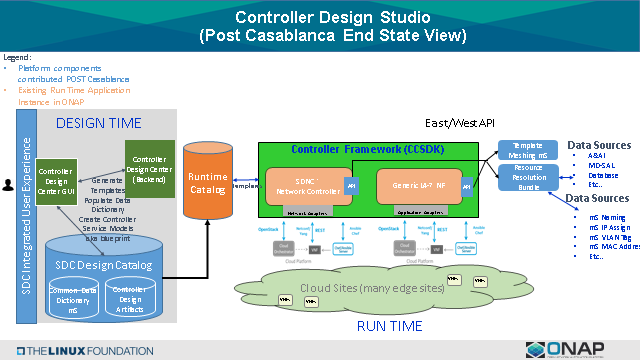Background
- For the ONAP Beijing release, the APPC project delivered the CDT design tool to support the APPC model driven design approach.
- For the next ONAP releases, we are proposing to develop a common design tool to support both SDNC and Generic L4-7 NFs (APPC, VFC) Controller integrated with SDC.
- This common design tool, also called “Controller Design Studio”, will be built with associated data dictionary and an Ingredient Resource Resolution Microservice
- The common design tool models shall be backwards compatible to the current use cases supported in Amsterdam and Beijing release by Generic L4-7 NF (APP-C specific).
Introduction
The system is designed to be self service, which means that users, not just programmers, can reconfigure the software system as needed to meet customer requirements. To accomplish this goal, the system is built around models that provide for real-time changes in how the system operates. Users merely need to change a model to change how a service operates.
Self service is a completely new way of delivering services. It removes the dependence on code releases and the delays they cause and puts the control of services into the hands of the service providers. They can change a model and its parameters and create a new service without writing a single line of code. This makes SERVICE PROVIDER(S) more responsive to its customers and able to deliver products that more closely match the needs of its customers.
Architecture
The Controller Design Studio is composed of two major components: the GUI (or frontend) and the Run Time (or backend). The GUI handles direct user input and allows for displaying both design time and run time activities. For design time, it allows for the creation of service models, from selecting the DGs to be included, to incorporating the artifact templates, to adding necessary components. For run time, it allows the user to direct the system to resolve the unresolved elements of the service model and download the resulting configuration into a VNF. At a more basic level, it allows for creation of data dictionaries, capabilities catalogs, and service models, the basic elements that are used to generate a configuration.The essential function of the Controller Design Studio is to create and populate a Service Model, create a configuration file from this Service Model, and download this configuration file (configlet) to a VNF/PNF.
